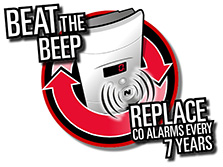Article by The National Volunteer Fire Council
April 16, 2019
Last month, the National Fire Protection Association (NFPA) published its 2017 U.S. Fire Department Profile report. The report, which is based on data collected via a national survey of fire departments, estimated that there were 682,600 volunteer firefighters in the United States in 2017. That is down significantly from the 814,850 and 729,000 volunteer firefighters that the NFPA estimates were active in the U.S. in 2015 and 2016, respectively.
The volunteer firefighter numbers for 2016 and 2017 are the lowest recorded levels since the NFPA began the survey in 1983. There was no NFPA U.S. Fire Department Profile report released in 2016, and the 2017 report is the first time that the data for 2016 or 2017 has been made available.
Number of Firefighters in the U.S., 1983, 1990, 2000, 2010, and 2015-2017
| Year | Total | Career | Volunteer |
| 1983* | 1,111,200 | 226,600 | 884,600 |
| 1990 | 1,025,650 | 253,000 | 772,650 |
| 2000 | 1,064,150 | 286,800 | 777,350 |
| 2010 | 1,103,300 | 335,150 | 768,150 |
| 2015 | 1,149,300 | 345,600 | 814,850 |
| 2016 | 1,090,100 | 361,100 | 729,000 |
| 2017 | 1,056,200 | 373,600 | 682,600 |
*Note, this is the first year for which firefighter numbers are available from the NFPA.
Source: NFPA Survey of Fire Departments for U.S. Fire Experience
“This report should be a wake-up call for everyone who serves in, is protected by, or cares about the volunteer fire service,” said National Volunteer Fire Council (NVFC) Chair Kevin D. Quinn. “We know many volunteer fire departments are struggling to maintain adequate staffing. However, the scale of the loss of volunteer firefighters estimated in this report is really disturbing and something that we need to work as a community and a nation to address.”
It is important to note that these numbers are estimates based on responses to a survey of a sample of U.S. fire departments that is designed to be representative of the overall U.S. Fire Service. Approximately 8.7 percent of fire departments surveyed responded to the survey. Any annual differences reflect both actual changes in what is being measured as well as year-on-year statistical and sampling variability.
According to the report, 83,550 of the 132,250 reduction in volunteer firefighters between 2015 and 2017 occurred in fire departments protecting communities with populations of 2,500 or fewer residents. The NFPA estimates an overall decline of 83,900 firefighters (career and volunteer combined) in those communities, a reduction of more than 20 percent over a two-year span. It should be noted that cross sections of data tend to produce less reliable estimates, statistically speaking, than the dataset as a whole because the sample size is smaller. That is particularly true for data in these reports related to smaller communities, where response rates tend to be lower than for communities with higher populations.
In addition to the decline in the number of firefighters serving in the smallest communities, the average age of those firefighters continued to increase in 2017. Fifty-three percent of firefighters serving communities with populations of 2,500 or less were over the age of 40, and 32 percent were over the age of 50 in 2017. This continues an aging trend that has been happening for years among the population of firefighters in small communities.
Age Range of Firefighters Protecting Communities with Populations of 2,500 or Less
| Year | Under 30 | 30-39 | 40-49 | Over 50 | Under 40 | Over 40 |
| 1987 | 29.7% (132,908) | 33.5% (149,913) | 20.9% (93,528) | 15.9% (71,153) | 63.2% (282,821) | 36.8% (164,681) |
| 2000 | 24.4% (100,601) | 29.9% (123,278) | 26.8% (110,496) | 18.9% (77,925) | 54.3% (223,879) | 45.7% (188,421) |
| 2010 | 23.7% (89,497) | 24.5% (92,500) | 23.1% (87,214) | 28.7% (108,357) | 48.2% (181,997) | 51.8% (195,571) |
| 2015 | 23.9% (96,687) | 23.6% (95,474) | 21.6% (87,382) | 30.8% (124,601) | 47.5% (192,161) | 52.4% (211,983) |
| 2017 | 24.0% (90,804) | 23.0% (76,383) | 21.0% (69,741) | 32.0% (106,272) | 47.0% (156,087) | 53.0% (176,013) |
Source: NFPA Survey of Fire Departments for U.S. Fire Experience
In 2015, at the request of the NVFC, the NFPA added a question to the survey about the tenure of active volunteer firefighters. While it is difficult to extrapolate very much from just two years of data, having information about volunteer firefighter tenure combined with the other data in the report will be useful in helping to identify trends in volunteer service moving forward.
Volunteer Firefighter Tenure Profile
| Year | 1 year or less | 1-5 years | 6-10 years | 10 or more |
| 2015 | 77,450 (9.5%) | 207,950 (25.5%) | 189,200 (23.2%) | 340,250 (41.8%) |
| 2017 | 71,000 (10.4%) | 179,600 (26.3%) | 148,000 (21.7%) | 284,000 (41.6%) |
Source: NFPA Survey of Fire Departments for U.S. Fire Experience
Although the 2017 report contains new data suggesting a troubling trend in volunteer firefighter staffing, it has been clear for years that recruitment and retention of volunteers is a public policy challenge that all levels of government have a role in helping to address. This year, the federal government will award more than $40 million to local fire departments to help pay for volunteer recruitment and retention efforts through the Staffing for Adequate Fire and Emergency Response (SAFER) grant program, funded out of the Federal Emergency Management Agency. Efforts are underway in Congress to make volunteer fire and EMS personnel eligible for student loan forgiveness and housing assistance, as well as to modify the tax code to make it easier for local communities to offer incentives.
“We need to redouble our efforts to help local communities bolster volunteer staffing levels,” said Quinn. “We should also start thinking about the practical implications of lower volunteer numbers, and how fire protection and emergency medical services are delivered by agencies that are struggling to maintain volunteer staffing. Finally, it is important to recognize that the staffing needs in every fire and EMS agency are unique. Departments in super rural areas are going to have very different challenges than departments that are in or near a large population centers, for instance. There is no such thing as a ’typical’ fire department, and I would caution against making assumptions about the circumstances of any particular agency based on the data in this or any other national- or state-level report.”





